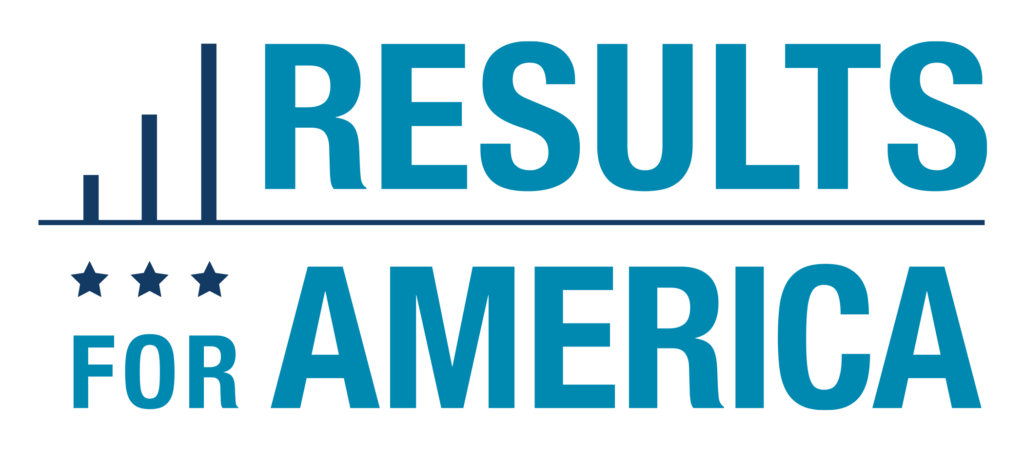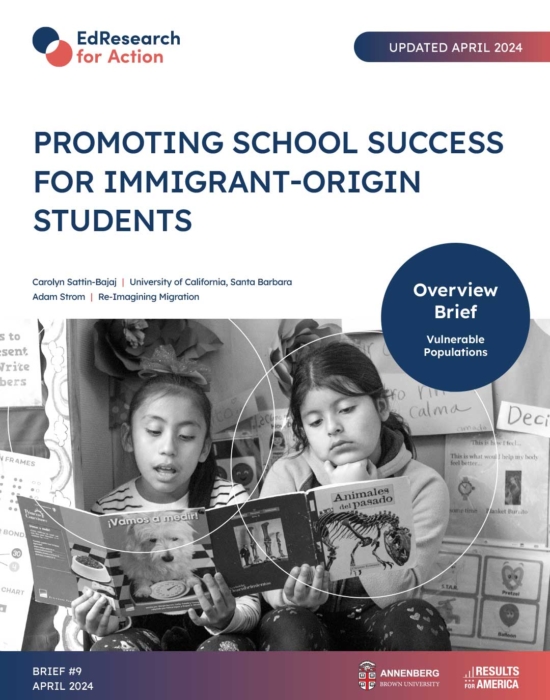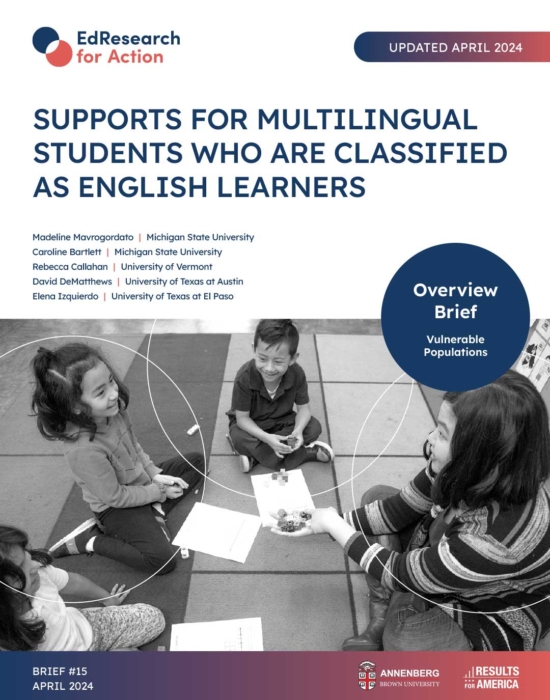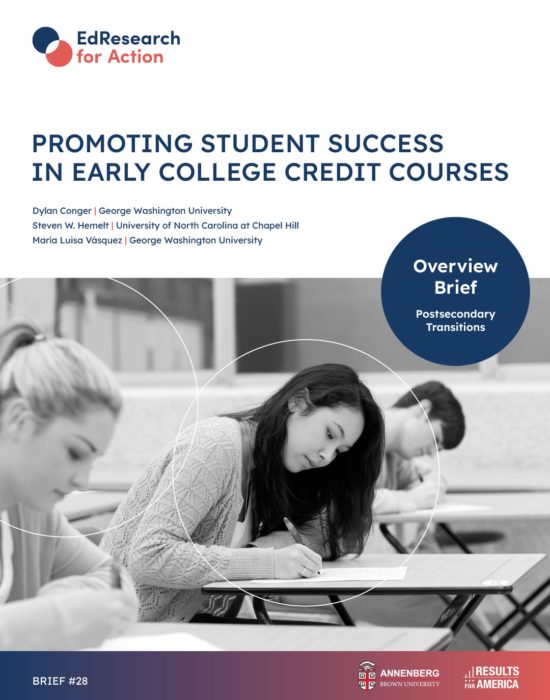HELPING STUDENTS MAKE INFORMED CHOICES ABOUT COLLEGE
This brief is one in a series aimed at providing K-12 education decision makers and advocates with an evidence base to ground discussions about how to best serve students during and following the novel coronavirus pandemic.
Celeste Carruthers | University of Tennessee, Knoxville
Lindsay Page | University of Pittsburgh
March 2022 | Brief No. 23
Central Question
How can schools and districts help students make well-informed choices about college?
Key Insights
Breaking Down the Issue
- On average, a college education translates into higher earnings and non- monetary benefits that recover the upfront investment of time and money, but the pandemic has disrupted many students’ plans for college.
- The cost of college rose steeply for decades but is currently holding steady or declining.
- Students who want to go to college often fall behind in completing the necessary steps for applications, especially if they are from disadvantaged backgrounds.
- About 10 to 20% of graduating seniors who are accepted to college do not enroll by the fall after high school.
Strategies to Consider
- Providing students more access to college counselors and setting aside time for college applications during the school day can raise college enrollment.
- Beyond whether to go to college and how to apply, students benefit from guidance on where to apply and enroll.
- Tracking student progress and facilitating targeted outreach and support can improve students’ likelihood of completing the application process.
- Connecting with students during the transition between high school and college helps them fulfill their postsecondary plans.
Strategies to Avoid
- Pushing all students to take Advanced Placement or Dual Enrollment courses will not necessarily improve college readiness or enrollment.
- Relying strictly on the experience and choices of prior cohorts may narrow the guidance that students receive about where to apply.
- Rigid advice against taking out loans may limit a student’s options and make it more difficult to succeed in college.
Breaking Down The Issue
The United States has several thousand colleges and universities and at least as many grants, scholarships, and loans that help cover the cost to attend. This bewildering array of options is further complicated for students by anxiety about taking on debt, and, for students those on the fence about going to college at all, a welcoming job market.
On average, a college education translates into higher earnings and non-monetary benefits that recover the upfront investment of time and money, but the pandemic has disrupted many students’ plans for college.
- Jobs requiring a college degree have higher annual wages and are less likely to be replaced by advancing technology. College-educated workers also have more stable employment during recessions.
- Today, most industries have more job openings than job seekers. The high school class of 2022 will likely have an easier time finding jobs, and with higher pay, than high school graduates from one or two years ago. But college graduates also have rising pay and low unemployment rates (2.2% in February 2022). Just 20% of midcareer jobs with salaries of at least $45,000 go to workers without a college education.
- From fall 2019 to fall 2021, postsecondary enrollment fell 5% overall—2.3% in four-year public and nonprofit universities and 13% in community colleges.
![]() The cost of college rose steeply for decades but is currently holding steady or declining.
The cost of college rose steeply for decades but is currently holding steady or declining.
- The sticker price of college (published tuition plus fees) rose by 1 to 2% from 2020 to 2021, slower than inflation. After subtracting grants and scholarships for tuition and fees and adding other costs (e.g., housing and books), the typical net cost of attending a public college or university has been flat or falling since 2015.
- For low-income students, colleges that appear expensive can actually be significantly cheaper than less competitive colleges with lower published tuition rates.
- Nonetheless, many students will need loans to afford college. Taking out a college loan is a personal investment with some degree of risk.
- In 2019-2020, 55% of public and nonprofit four-year graduates had college loan debt, not counting loans their parents took out for them.
- Most high school students are eligible for college loans from the federal government; 26% of undergraduate students borrowed Federal Direct student loans in 2020-2021. Federal interest rates on college loans are typically lower than for other types of debt, but paying off student loans still takes many years.
- About 20% of borrowers are in default, which has serious consequences for their financial aid eligibility, credit rating, and even their take-home pay.
- Many students in default are those with smaller loan balances who attended college but did not graduate, particularly those who attended for-profit or community colleges.
Applying for financial aid via the Free Application for Federal Student Aid (FAFSA) is an arduous process. This is especially true for lower-income students who often face additional steps to verify their family income and other details.
In one state, students who were selected for FAFSA verification were 5% less likely to enroll in college.
Students may struggle to understand their financial aid offers, which may have confusing jargon andunclear distinctions between grants and loans.
![]() About 10% to 20% of graduating seniors who are accepted to college do not enroll by the fall after high school.
About 10% to 20% of graduating seniors who are accepted to college do not enroll by the fall after high school.
- Summer transition tasks, such as taking placement tests, setting up tuition payment plans, managing unexpected costs, and organizing transportation to campus, can stand in the way of a seamless transition to college.
Strategies to Consider
Providing students more access to college counselors and setting aside time for college applications during the school day can raise college enrollment.
One study found that each additional counselor in a high school increased the likelihood that students would enroll in a four-year college by 24%.
- Counselor caseloads are often above recommended levels, and counselors may lack the resources to provide students with sufficient support in key college-going processes such as admissions requirements, career options, financial aid, and summer transition planning. This makes it difficult for students to get guidance about their college options at school.
- Exposure to effective in-school college counseling is most important for students from low-income backgrounds and those with lower academic credentials. These students may have less access to college-going guidance outside of school.
- Survey evidence suggests there are big socioeconomic gaps in students’ contact with high school guidance counselors. Districts with higher poverty rates or higher rates of non-white, non-Asian students tend to have fewer counselors.
- Non-profit organizations that provide intensive, individualized college coaching can improve college-going outcomes for low-income and first-generation students. A word of caution: external college counseling programs that do not closely collaborate with schools may duplicate efforts or fail to improve equitable access to college advice.
- In a recent experiment, carving out school time to apply for admission and financial aid increased college going by 10%, and even more so among students who were not taking advanced courses.
- Delaware high schools have a designated week devoted to helping students complete college applications during school.
- About one out of every four undergraduate students is over age 25. College advising in high school can help those who start or return to college several years later.
![]() Beyond whether to go to college and how to apply, students benefit from guidance on where to apply and enroll.
Beyond whether to go to college and how to apply, students benefit from guidance on where to apply and enroll.
- For students who wish to earn a bachelor’s degree, their chances are better if they start at a four-year university instead of a community college.
- The College Scorecard can help students examine differences between colleges that look similar but have very different graduation rates and debt burdens, but this tool has been underused by students from less resourced schools and families.
- Research consistently finds that students who attend for-profit colleges do worse than students from public and nonprofit colleges, with lower earnings and higher rates of student loan default.
![]() Tracking student progress and facilitating targeted outreach and support can improve students’ likelihood of completing the application process.
Tracking student progress and facilitating targeted outreach and support can improve students’ likelihood of completing the application process.
- Some states provide reports to school counselors about student progress with tasks like submitting college applications and filing the FAFSA.
- Text message communication from school counselors to students improved completion of key college-going tasks such as taking entrance exams, applying to college, and completing the FAFSA.
- In one randomized control trial, students whose families received FAFSA support from tax preparers were 29% more likely to complete at least two years of college. Simply informing families of the importance of the FAFSA had no impact.
![]() Connecting with students during the transition between high school and college helps them fulfill their postsecondary plans.
Connecting with students during the transition between high school and college helps them fulfill their postsecondary plans.
- Proactive summer support from high schools or colleges can help college-intending students complete summer transition tasks, such as taking placement tests, and enrolling on time.
- In one experimental study, summer support from a high school advisor reduced the number of students who left the college pipeline by 19%. Effects were considerably larger for students from low-income backgrounds.
- In another experimental study, a university communicated with incoming first-year students using a text message chatbot that provided personalized reminders and assistance. This helped students complete required pre-matriculation tasks and reduced summer attrition by 21%.
Strategies to Avoid
Pushing all students to take Advanced Placement or Dual Enrollment courses will not necessarily improve college readiness or enrollment.
- One study found that students who were offered cash incentives for passing Advanced Placement exams were more likely to enroll in college. However, a recent experiment encouraging students to take Advanced Placement courses lowered their confidence and increased stress, with nocorresponding increase in ACT/SAT scores or college enrollment.
Although Dual Enrollment coursework typically is associated with higher rates of college enrollment and completion, a recent experimental study of dual-credit math coursework found that postsecondary effects were limited.
Attempts to dramatically increase dual credit in one state were not well targeted, and often occurred in schools already offering early college coursework.
- A growing number of dual enrollment courses are offered online, which increases accessibility but raises concerns about quality, given mounting evidence that students do better with face-to-face instruction at the college level.
![]() Relying strictly on the experience and choices of prior cohorts may narrow the guidance that students receive about where to apply.
Relying strictly on the experience and choices of prior cohorts may narrow the guidance that students receive about where to apply.
- Tools for college search like Naviance, College Navigator, and Big Future can help inform students about where to apply.
- Online tools—as well as staff and student memory—often suggest schools based on where graduates from that high school enrolled in the past. This can lead students to be overly conservative in their application behavior, especially if they are qualified for selective colleges that few of their peers ever attended.
![]() Rigid advice against taking out loans may limit a student’s options and make it more difficult to succeed in college.
Rigid advice against taking out loans may limit a student’s options and make it more difficult to succeed in college.
- Randomized controlled trials that highlighted the future costs of loans and encouraged students to carefully consider their choices led students to borrow less, but their subsequent academic performance was weaker, and they were more likely to default later on.
- In contrast, increasing federal loan limits or including loan offers in financial aid award letters improved grades and long-term outcomes such as earnings and repayment rates.
This EdResearch for Action Project brief is a collaboration among:




Funding for this research was provided by the Bill & Melinda Gates Foundation. The findings and conclusions contained within are those of the authors and do not necessarily reflect positions or policies of the foundation.
More Like This
We are grateful for thoughtful comments and suggestions from Dylan Conger, Robin Jacob, Ryan Reyna, and Nakia Towns. Linnea Endersby provided excellent research assistance.




